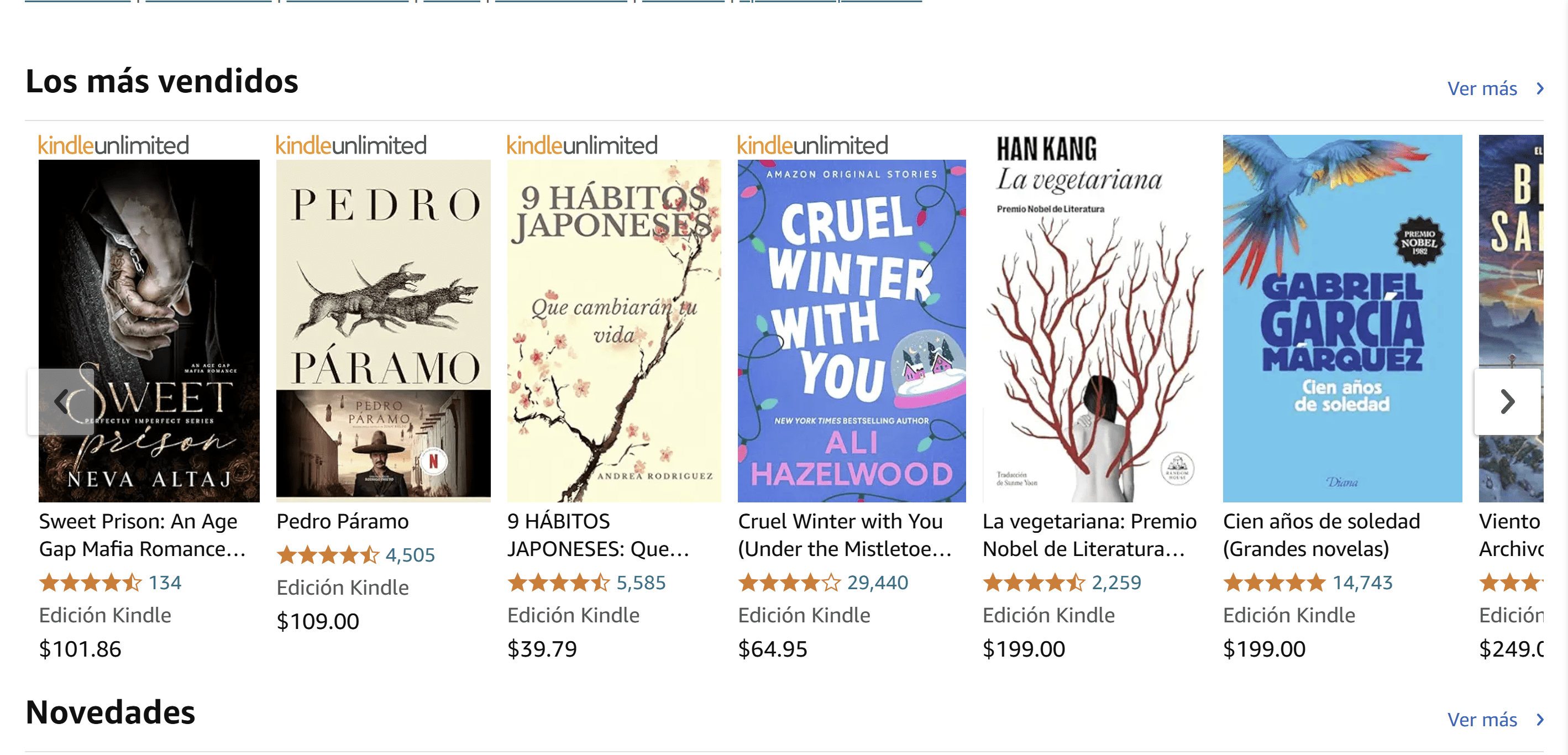Reading is the perfect way to pick up new vocabulary and grammar at your own speed. Using a variety of reading sources for input will dramatically increase your vocabulary and comprehension. You should focus on reading material that is at or just above your Spanish level. If what you’re reading is at or just above your level, you should be able to answer the 5 Ws. Who or what is the main topic? What are they doing, or what is its purpose? When is it happening? Where is it happening? And, why is it happening? You don’t need to understand every detail, but you should understand the overall story or purpose. If you don’t understand the story or purpose, read something easier. It’s ok if you have to look up a lot of words, especially in the beginning. Using reading aids to look up new words will allow you to stretch above your reading level and pick up new vocabulary, and over time you’ll have to look up fewer and fewer new words as reading gets easier.
If you are looking for tools to assist you with your reading, check out the article below. There are a lot of tools that make reading Spanish much easier and more fun.
How to Organize Your Reading Sources
I usually read on my phone, so I have a folder where I keep bookmarks for all the Spanish news websites I like to read. If you prefer reading on a PC, you can create a bookmark folder to store all the websites on your bookmark bar, or you can store the links in your Notion planner.
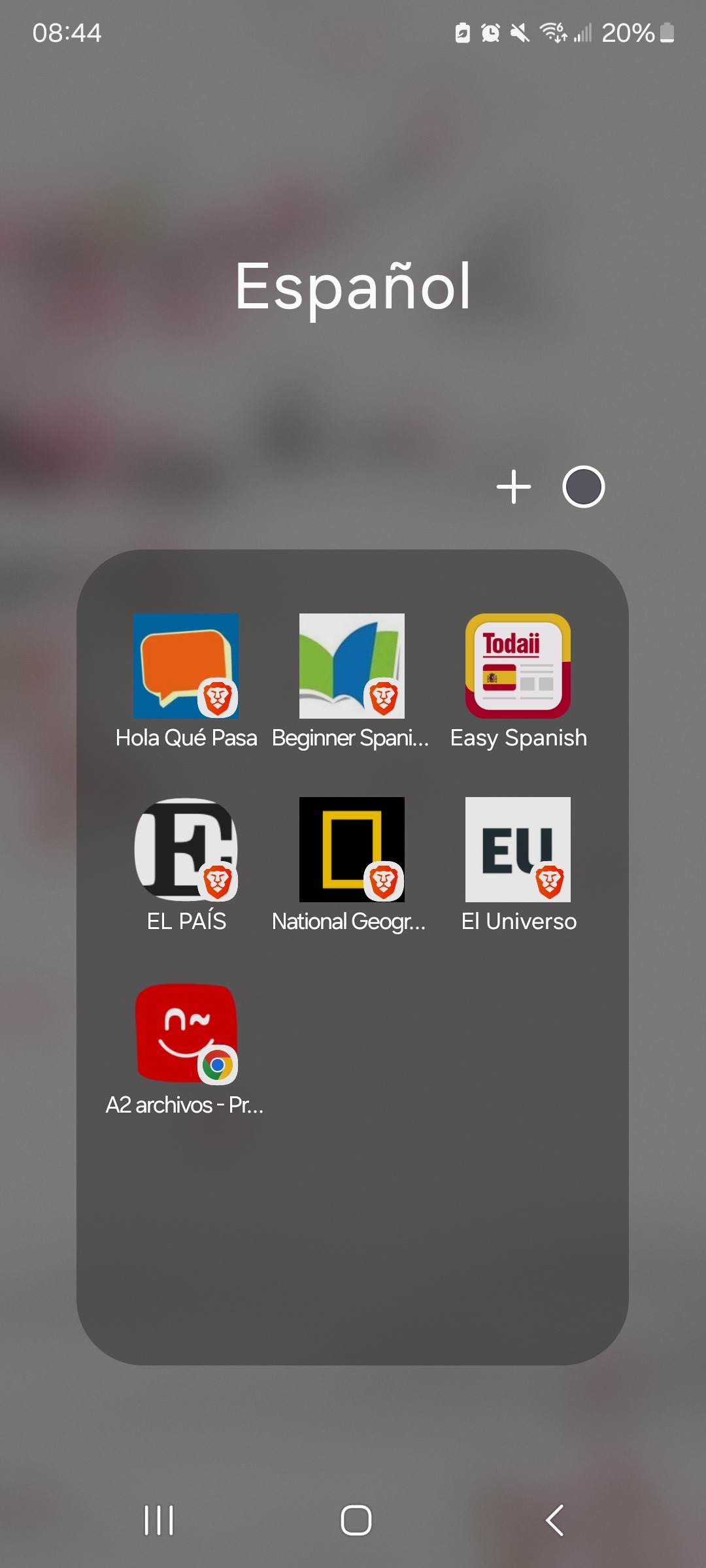
I use the Brave browser for reading because it removes a lot of clutter and makes nice-looking thumbnails when I add a website to my home screen. However, you can use any browser to add links to your home screen, just go to settings, then click “add to home screen.”
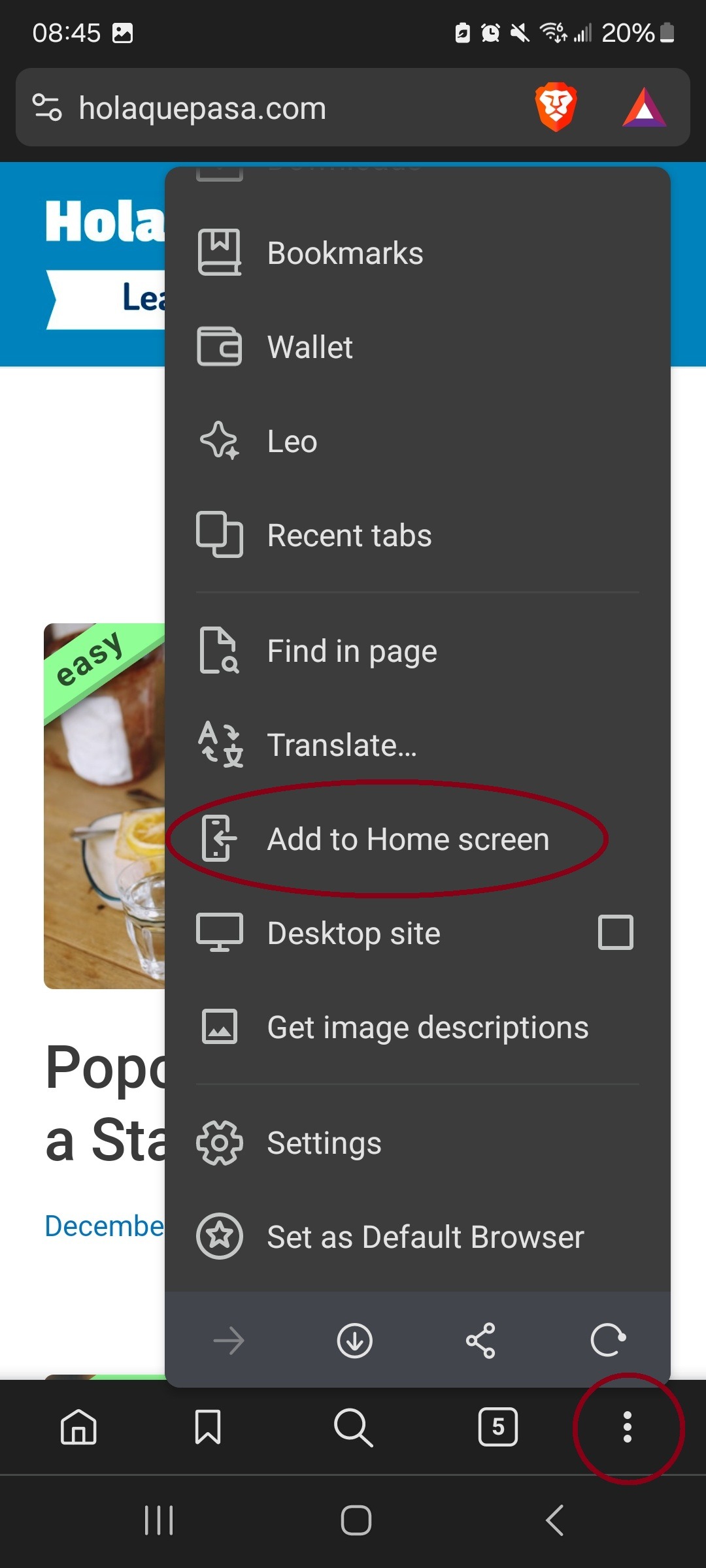
Beginner
Before you start reading Spanish articles, you should have a basic understanding of grammar and vocabulary and be at about an A2 level. If you have completed Spanish Dictionary’s beginner grammar course, you are ready to start reading.
Spanish Reading
Spanish Reading is one of the best websites for practicing reading Spanish! It has articles for learners of all levels, and each article includes audio and a quiz. The website also has a pop-up dictionary feature that allows you to hover over unknown words to see their English translation.
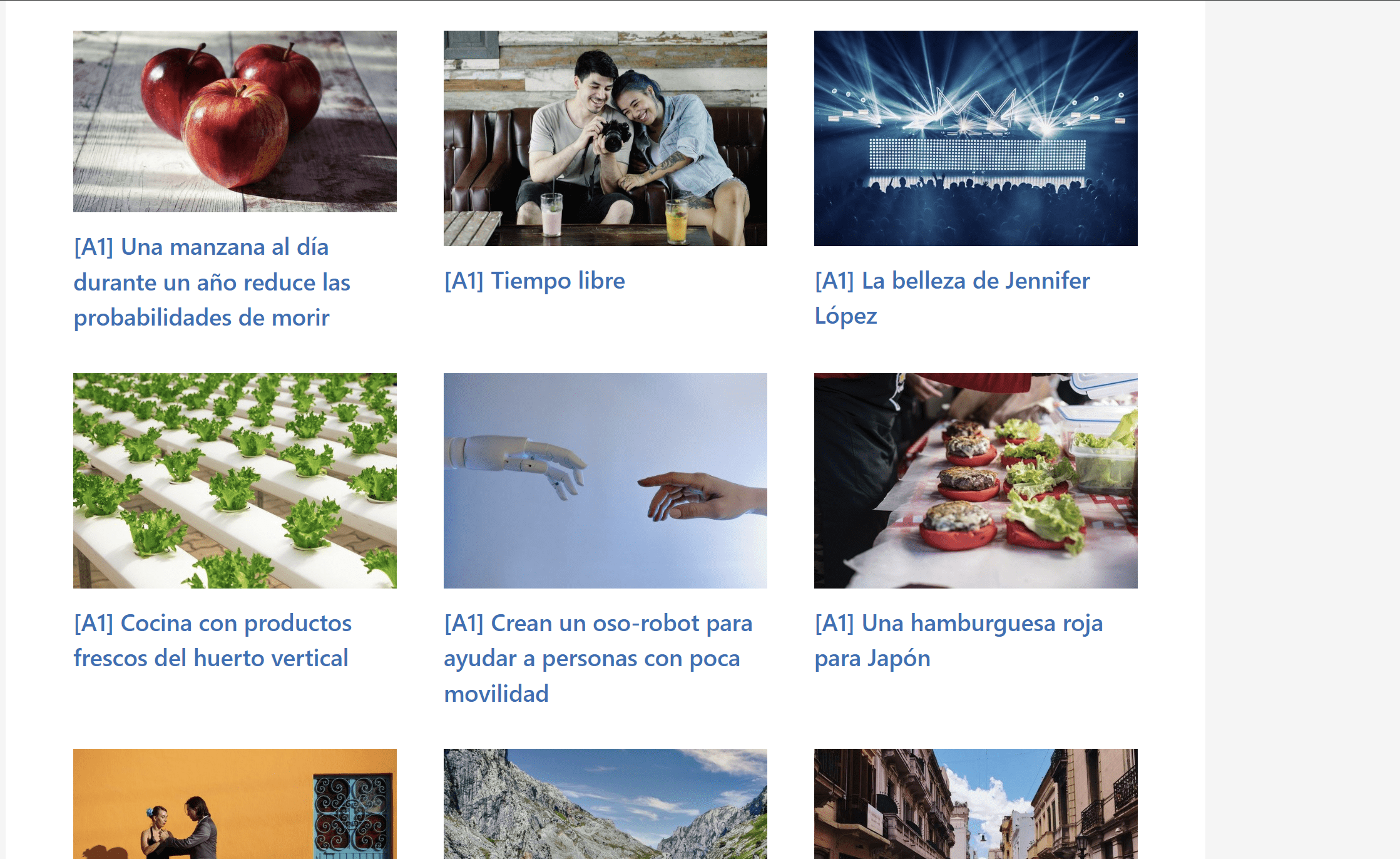
Snappy Spanish
Snappy Spanish has fun short stories for learners of all levels! Each story includes audio and an English translation.
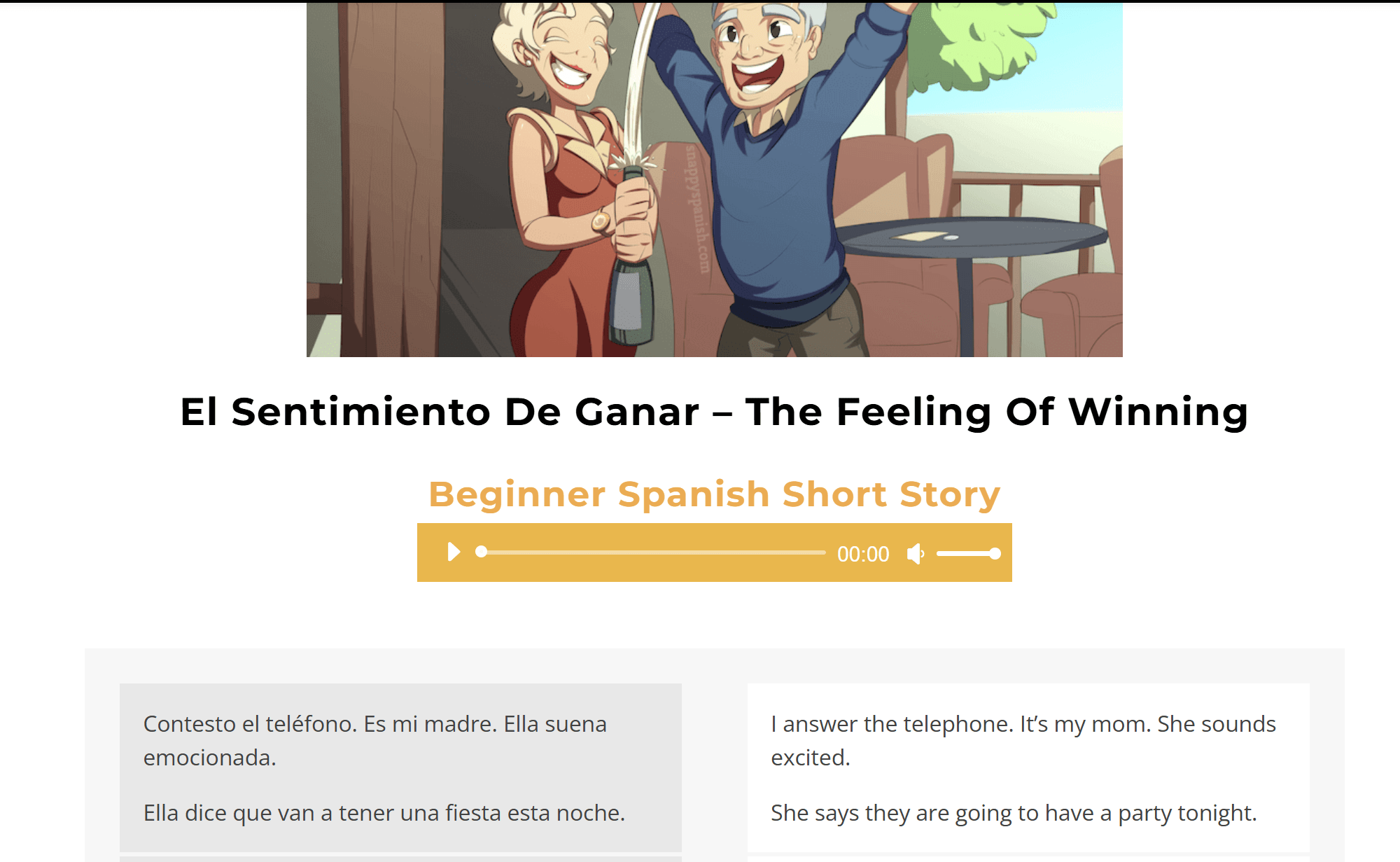
Lawless Spanish
Lawless Spanish has lots of short articles with audio and a pop-up dictionary. This website is great for learners of all levels.
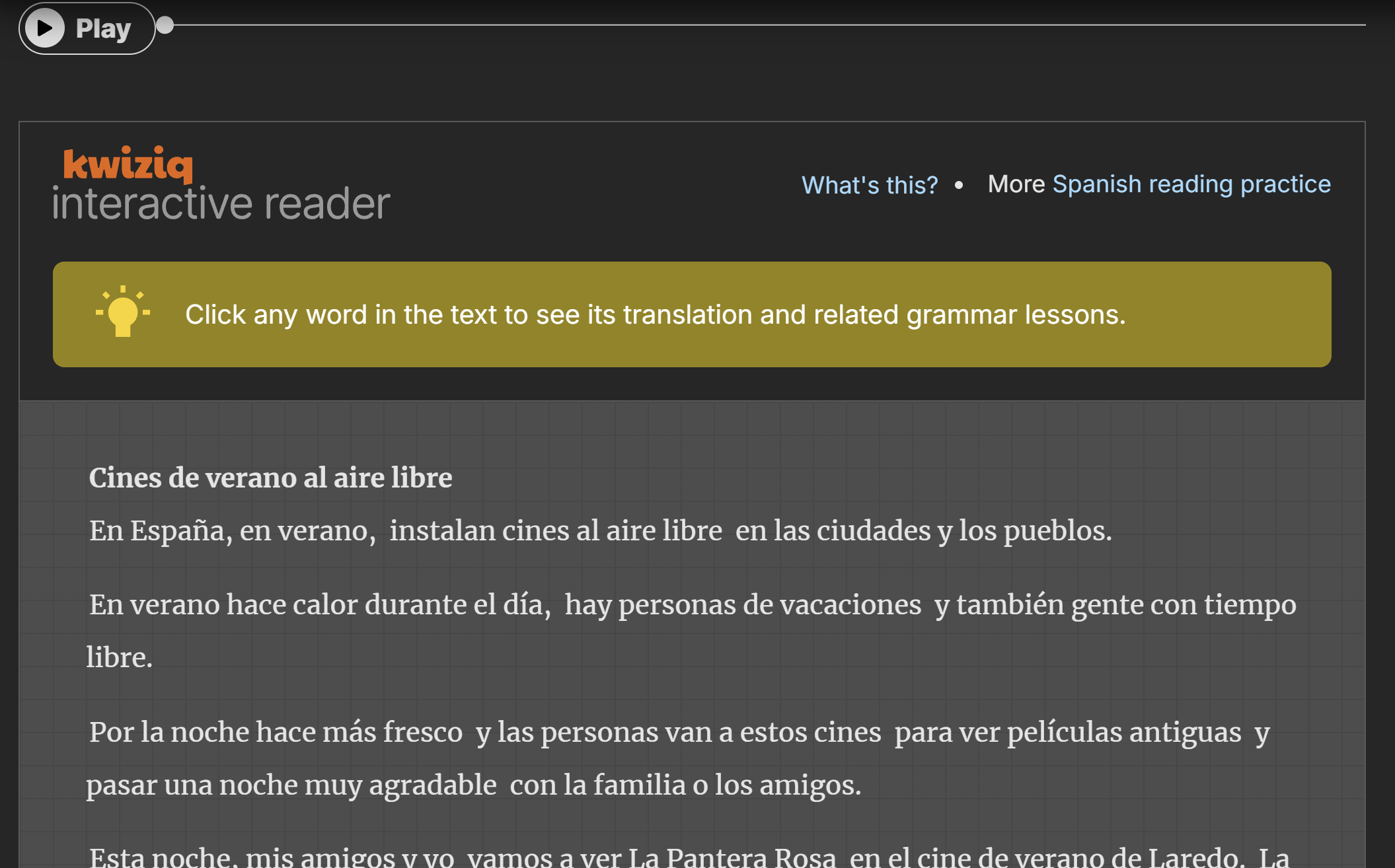
Hola Qué Pasa
Hola Qué Pasa is an amazing website for learning to read Spanish. It has hundreds of articles for beginner and intermediate learners. The articles are interesting but easy to follow, and each article comes with audio. You can also click on the words in green to see the English translation.
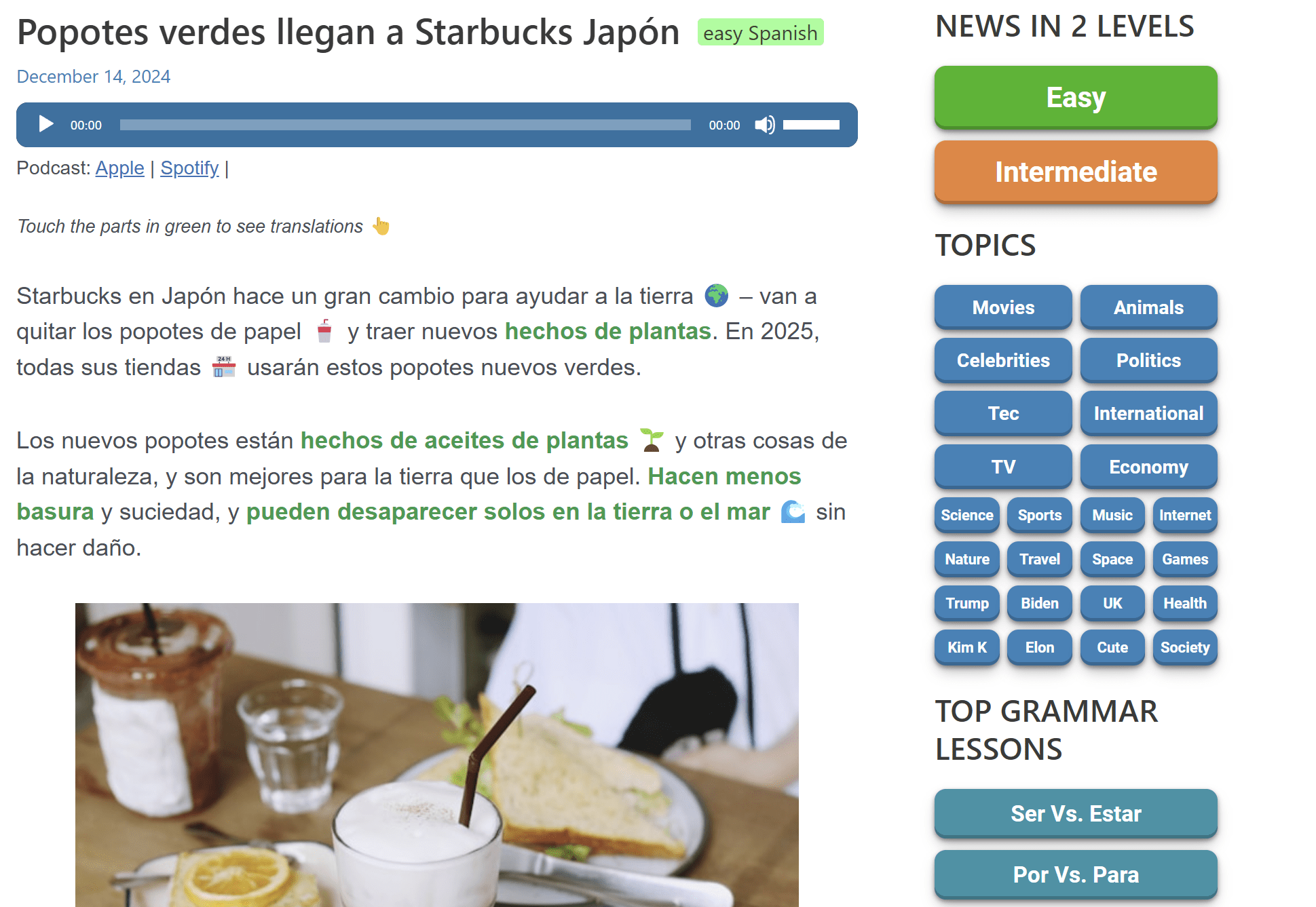
Lingua
Lingua has 27 simple texts available for Spanish learners to practice reading. The texts are a little boring, but they are great for beginners who can’t read much yet. There are also quizzes with each article to test your comprehension.
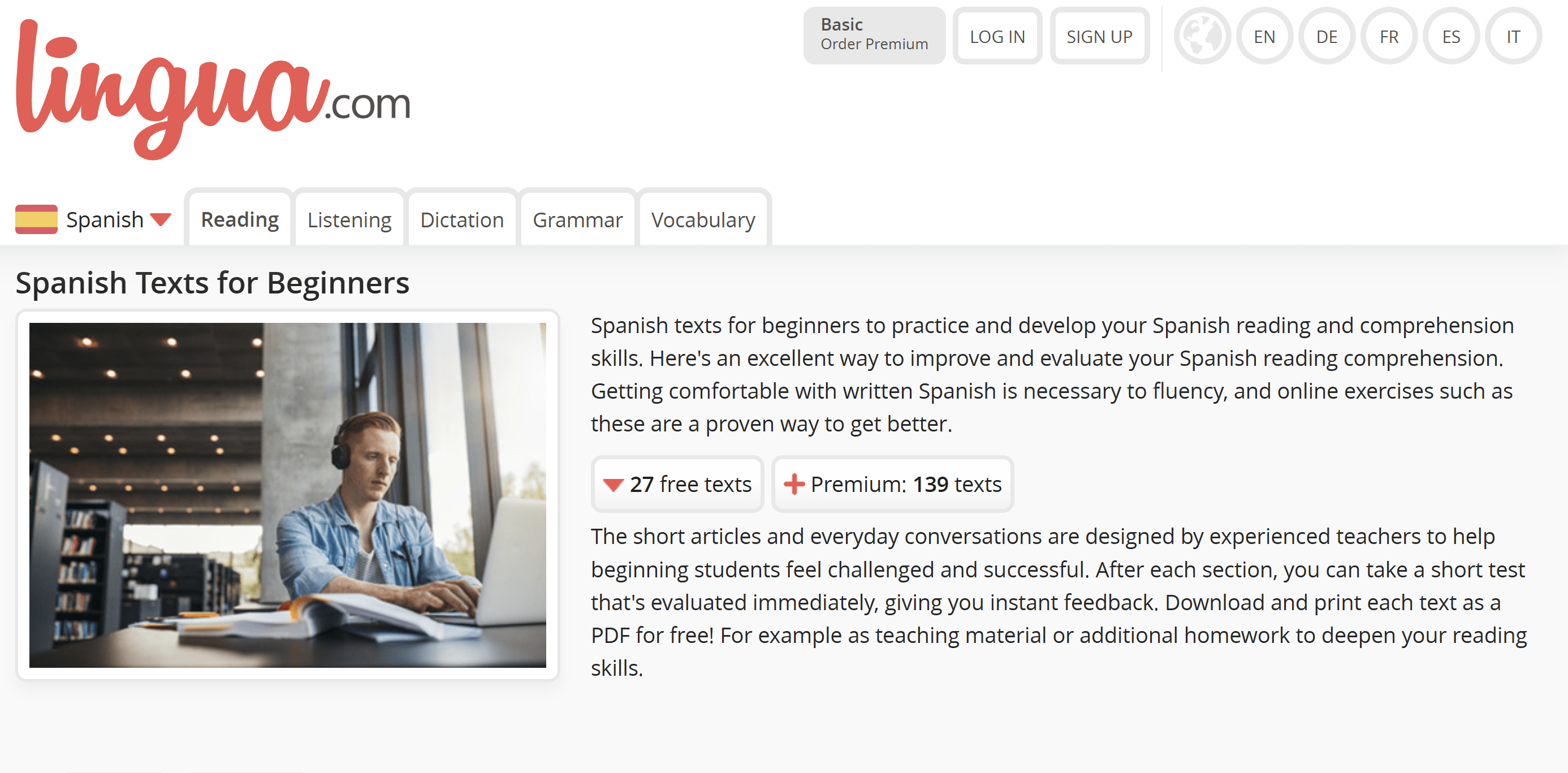
Intermediate
At the intermediate level, it’s time to start reading more complicated Spanish articles about more varied topics. These websites are still intended for learners or children, but they are written with more advanced grammar and vocabulary.
Spanish in Levels
On this website, each article is written at three different levels, so you can choose the difficulty of the article you want to read. I recommend reading an article first at your level and then at a higher level to learn new vocabulary and how the same topic can be phrased differently.
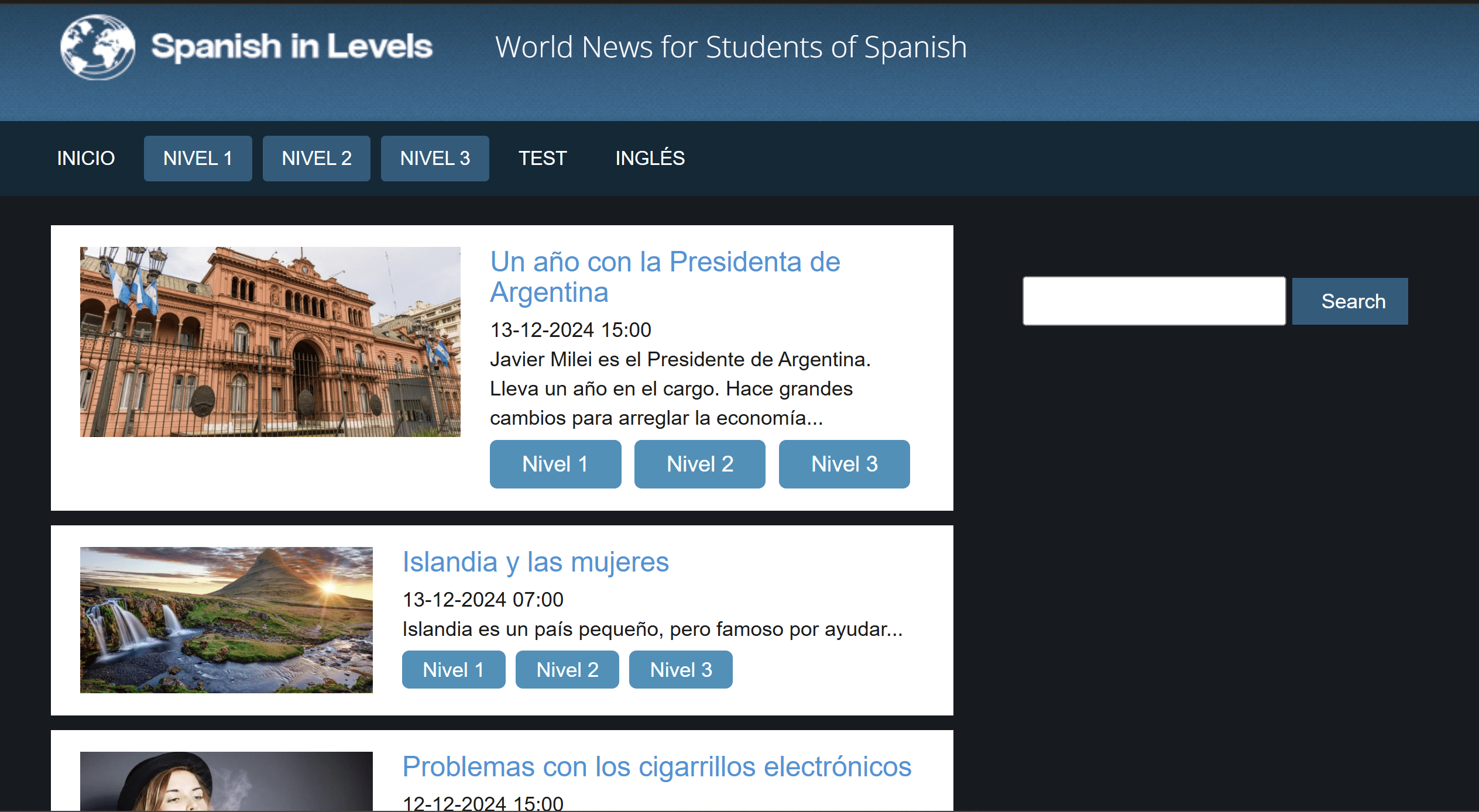
Planeta Fácil
Planeta Fácil publishes simplified news articles to make them easier to understand, and each article also links to the original more difficult version of the article at the end. Planeta Fácil also has TV and radio programs where you can listen to the news in easy Spanish.
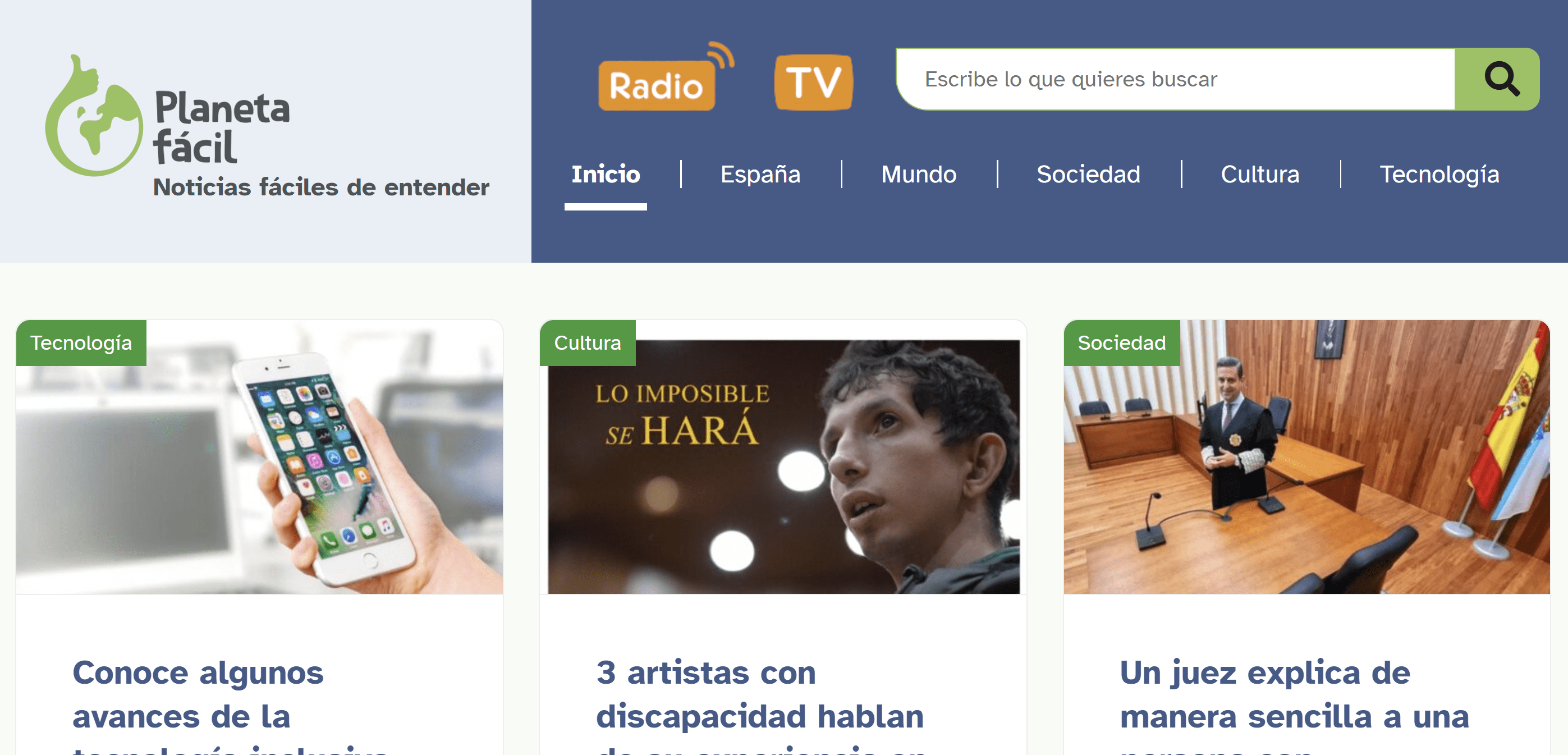
Todaii Spanish
Todaii Spanish is available as both a website and an app. Todaii provides a pop-up dictionary that allows you to translate words by clicking on them. It is a fantastic tool for beginners who are not yet comfortable looking up words and phrases on their own.
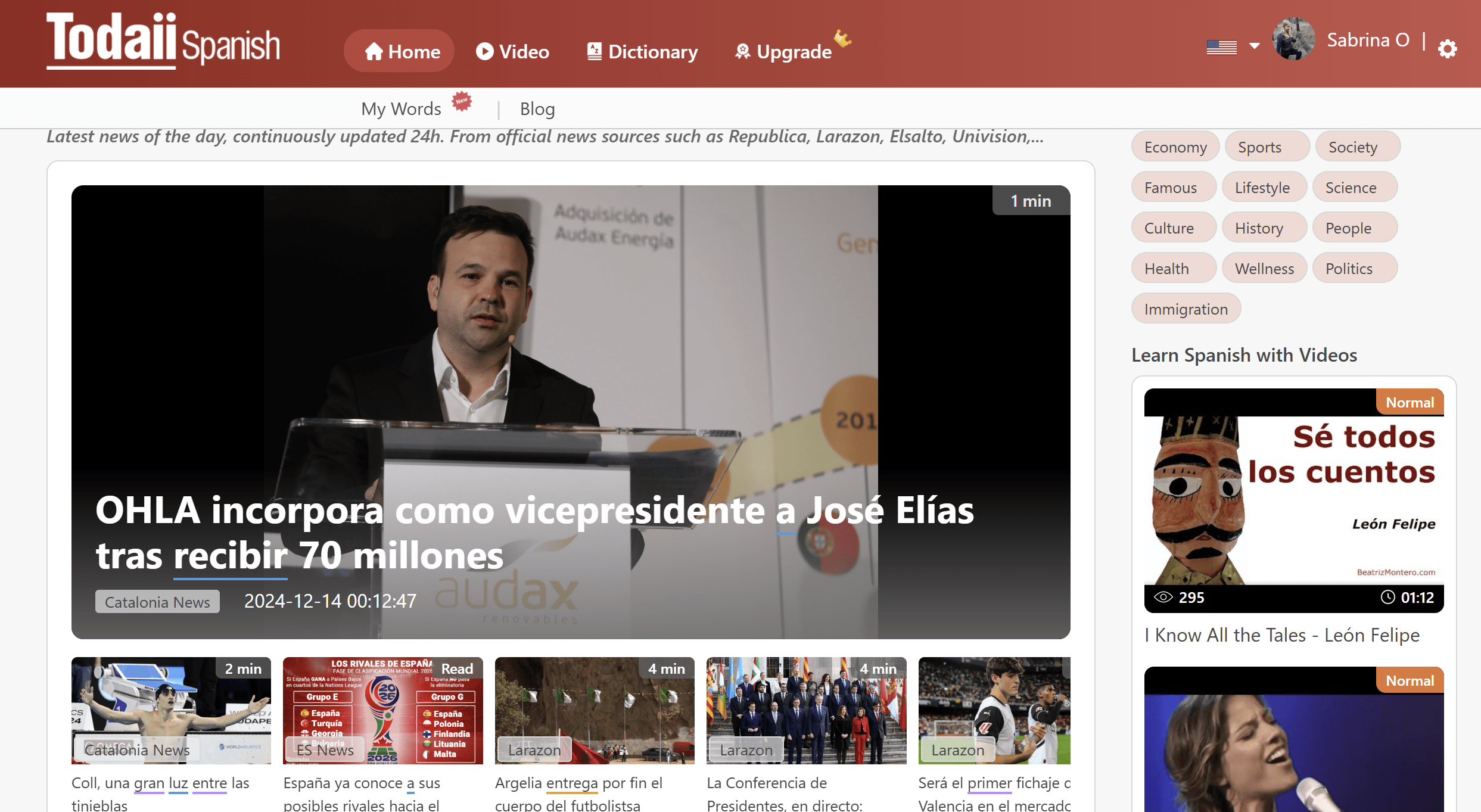
Mamablue
Mamablue has a variety of children’s stories with audio to help you practice your Spanish. This website is great for intermediate learners who are just starting to read native Spanish texts.
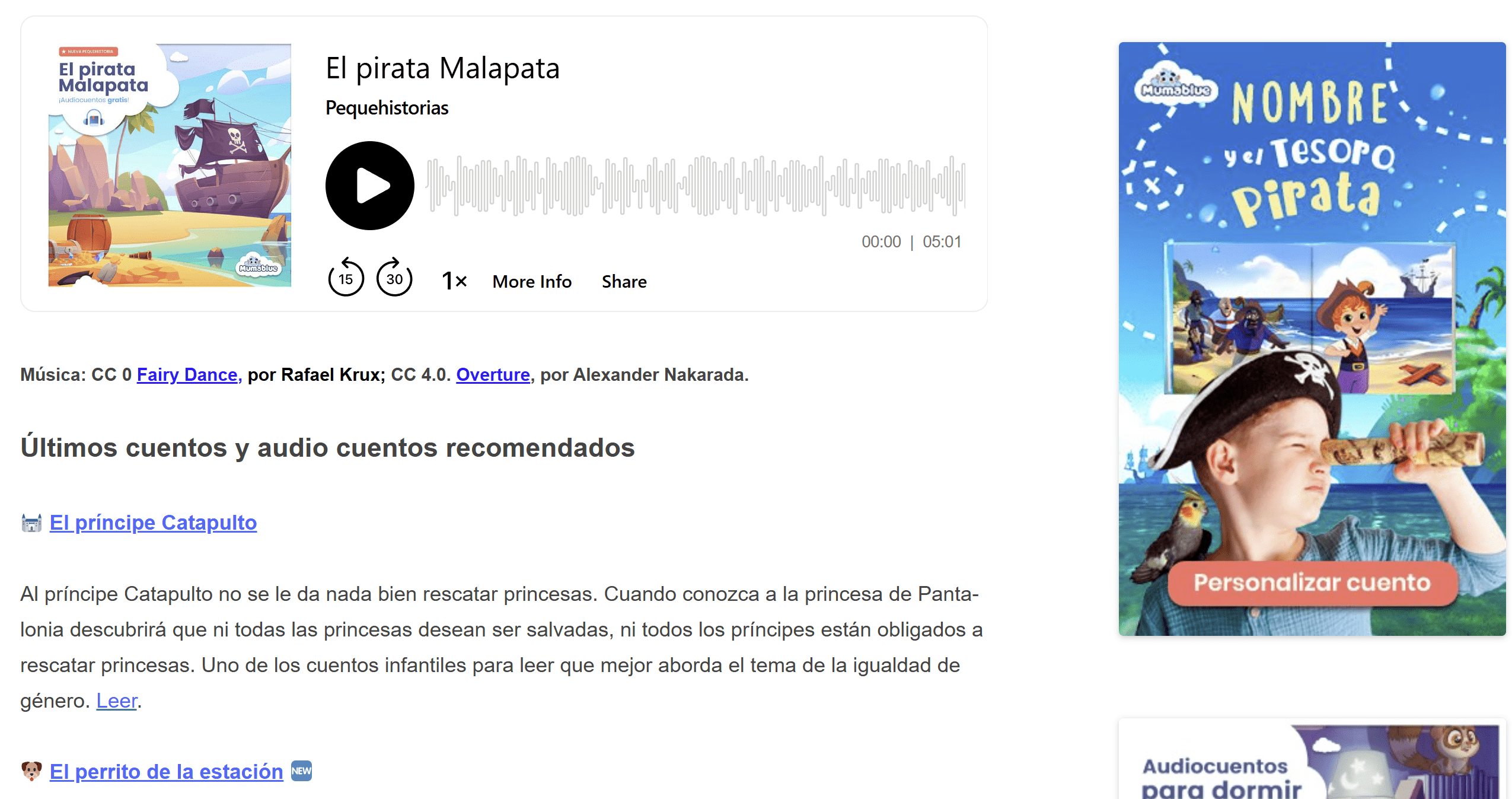
Bosque de las Fantasías
Bosque de las Fantasías or Forest of Fantasy is another great website for reading fairy tales and fables. These stories can use fairly complex vocabulary even though they are made for children, so they are great for building up your vocabulary and getting used to reading stories in Spanish.
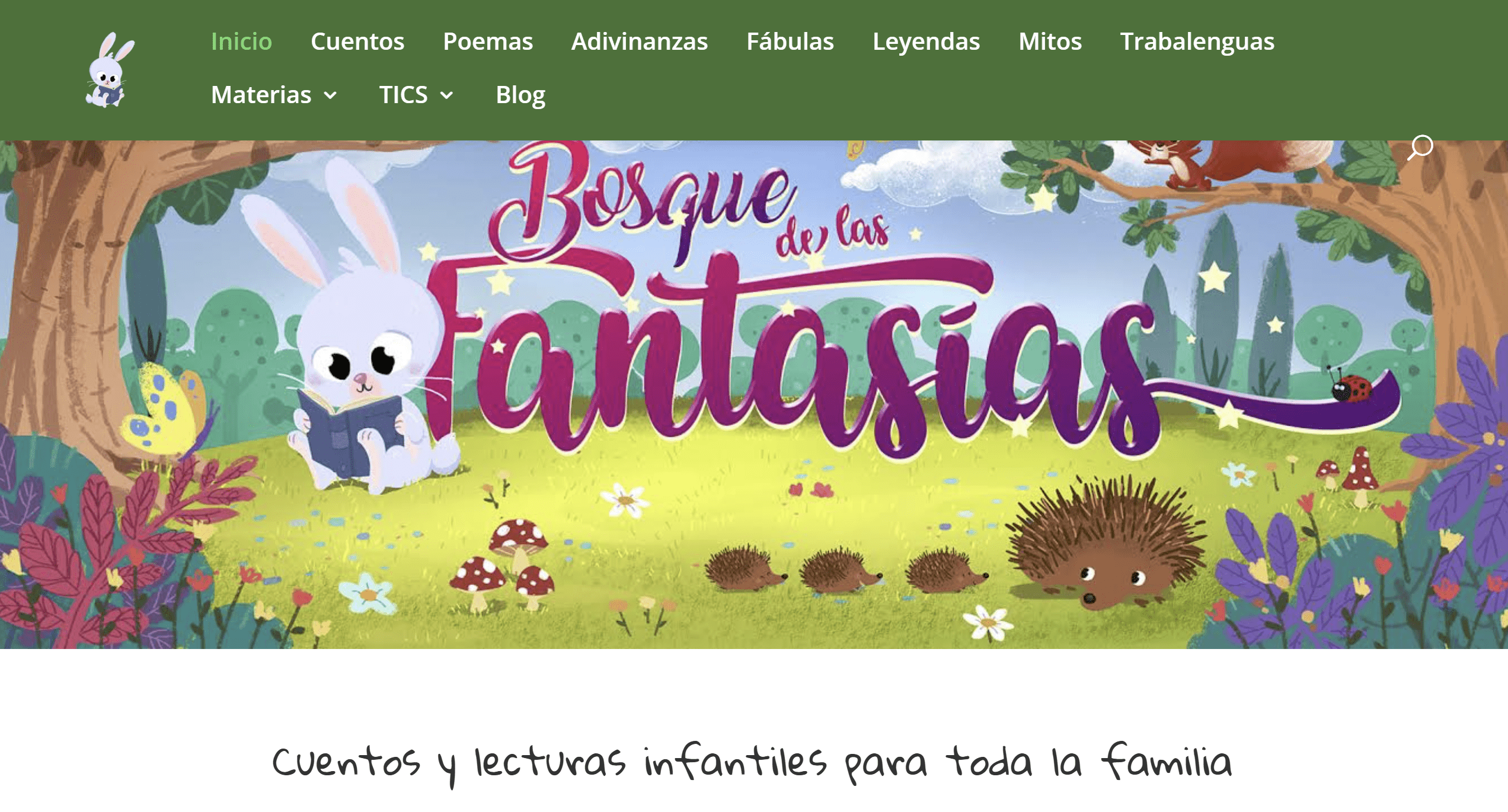
Advanced
At the advanced level, you should now focus on reading books and articles intended for native Spanish speakers. Below are several websites for reading books, but I also recommend finding websites that write about topics you are interested in, such as sports, science, pop culture, or history. You can find new websites by Googling your interests in Spanish and bookmarking the ones that look interesting.
Webtoons
Webtoons has many free webcomics translated into Spanish that are easy to read and understand, making it a great resource for learners. Comics are some of the best reading material for learners because they are engaging and there is a lot of context provided through images.
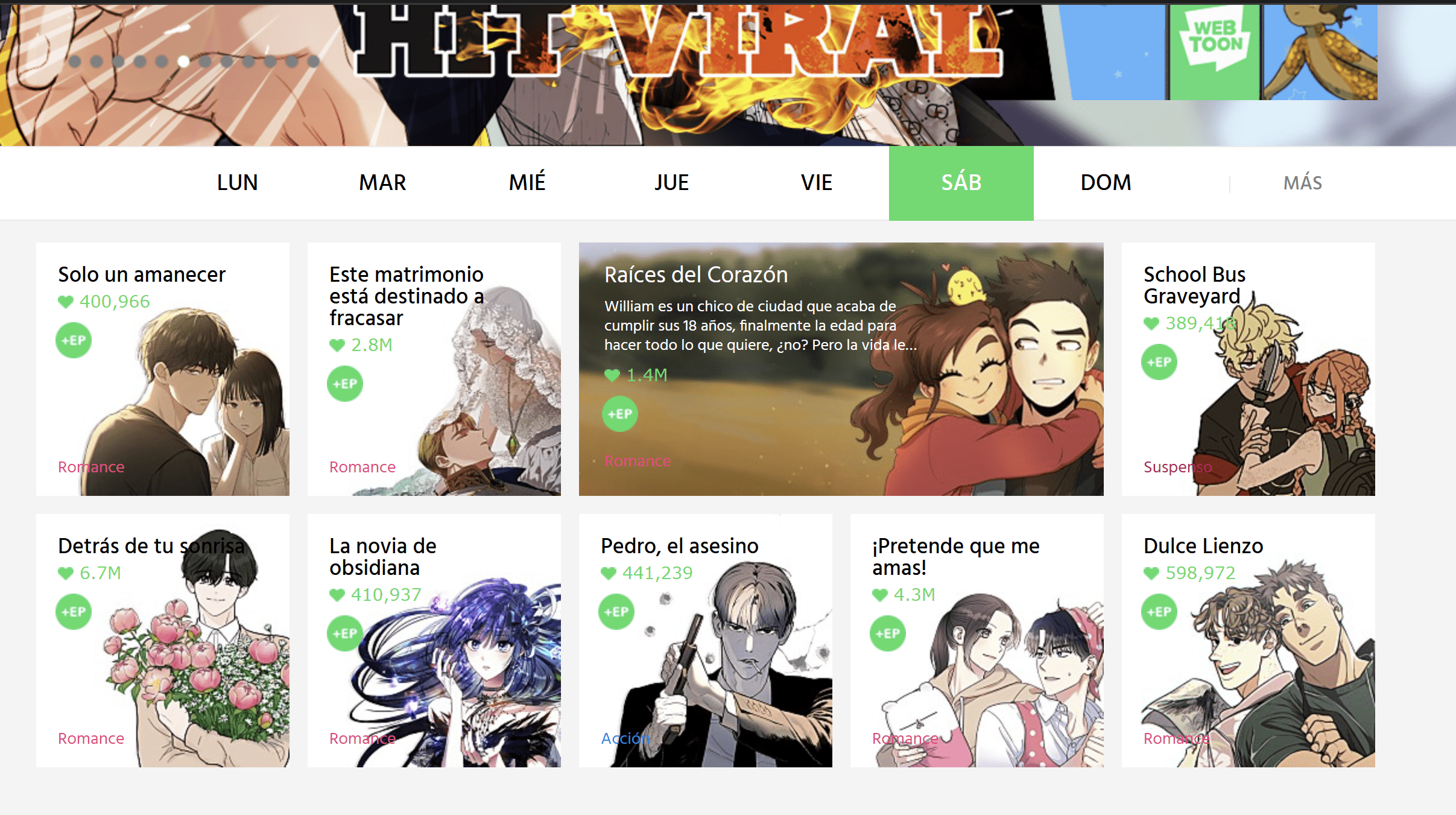
Z-Library
To access Z-library and download books, you must create a free account. Also, make sure you use the correct website linked below because there are fake ones. If the link you have is broken, you can check the Wikipedia page for Z-library to find the correct one. This library has a wide variety of popular light novels available to download and read. Similar to Z-library is Anna’s Archive, which you can also find the link to via their Wikipedia page.
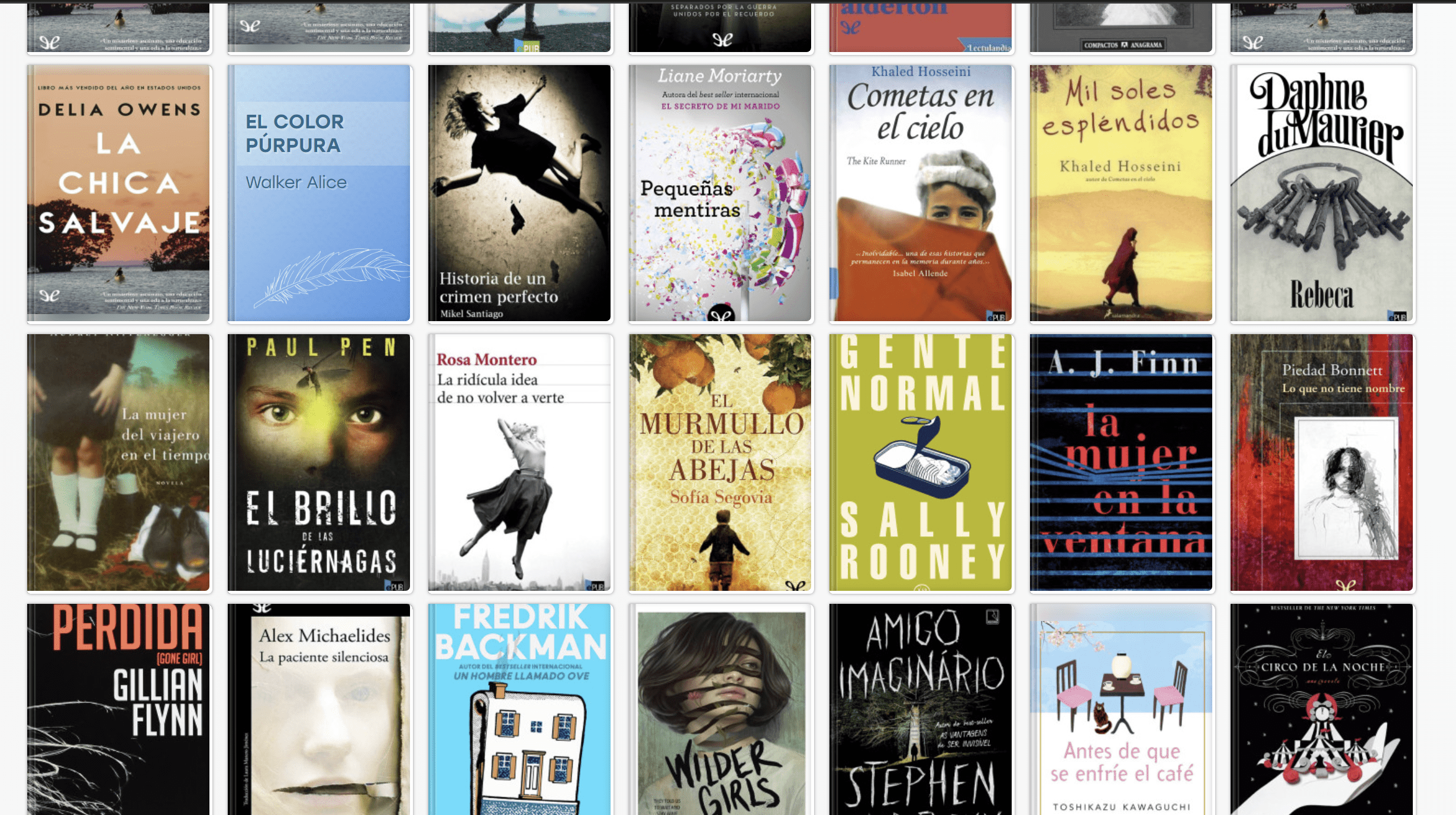
El Libro Total
El Libro Total is a website with a large library of free Spanish books, many of which include audio!

Mango Manga
Mango Manga has Asian manga and manhua that have been translated into Spanish. They have many popular series available to read for free with ads.
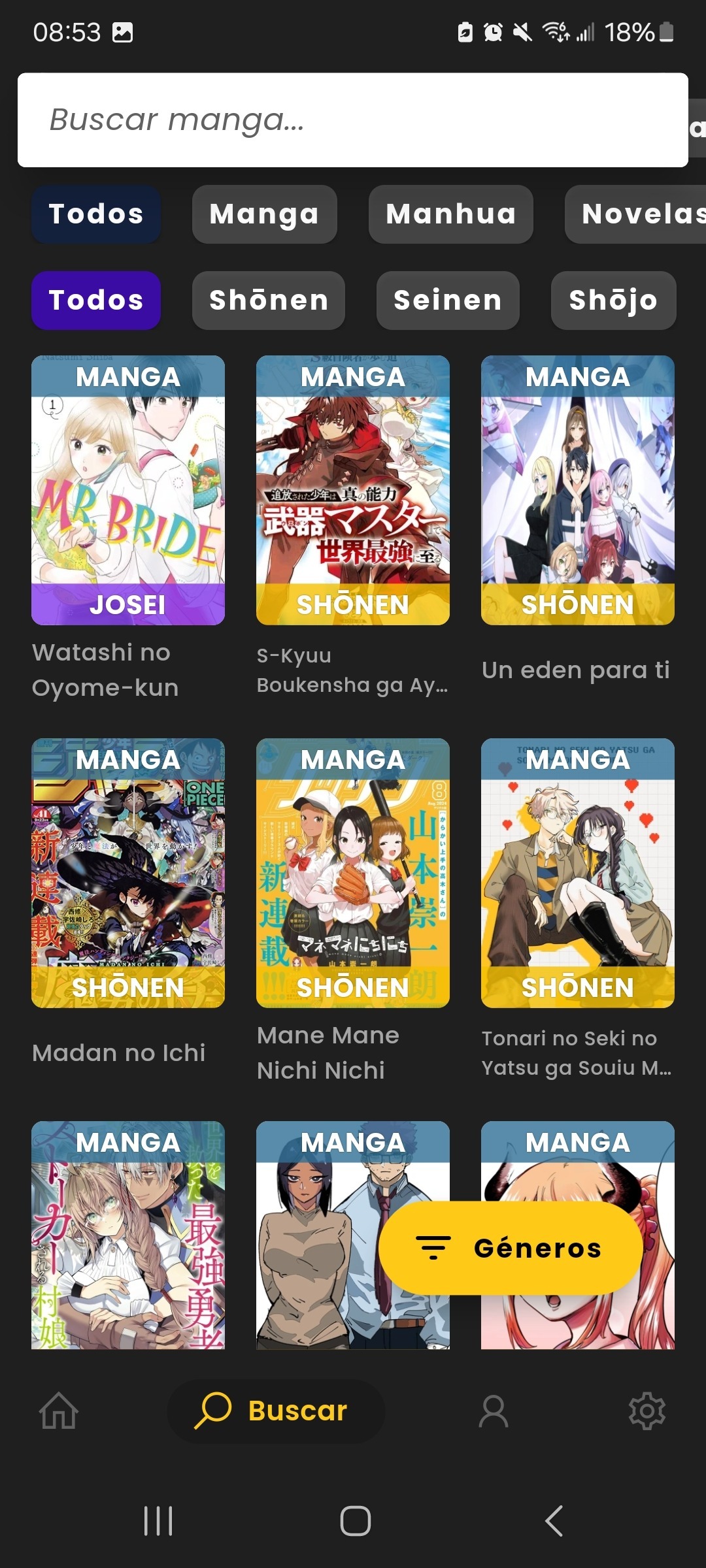
Amazon Kindle MX or ES – Premium
You can use either Amazon Kindle MX (Mexico) or ES (Spain) to access a huge library of Spanish books, as Amazon Kindle has pretty much any book you could want. However, you need to create a new Amazon account for Spanish Amazon. Unfortunately, you also can’t merge your Spanish Kindle account with your normal Kindle account, so if you already use Kindle you need to sign in and out to switch between the accounts. If you are using the app and it won’t show you the Spanish bookstore, you may need to use a VPN. However, if you buy a book in the browser version of Kindle, it will show up in your app without issue.
